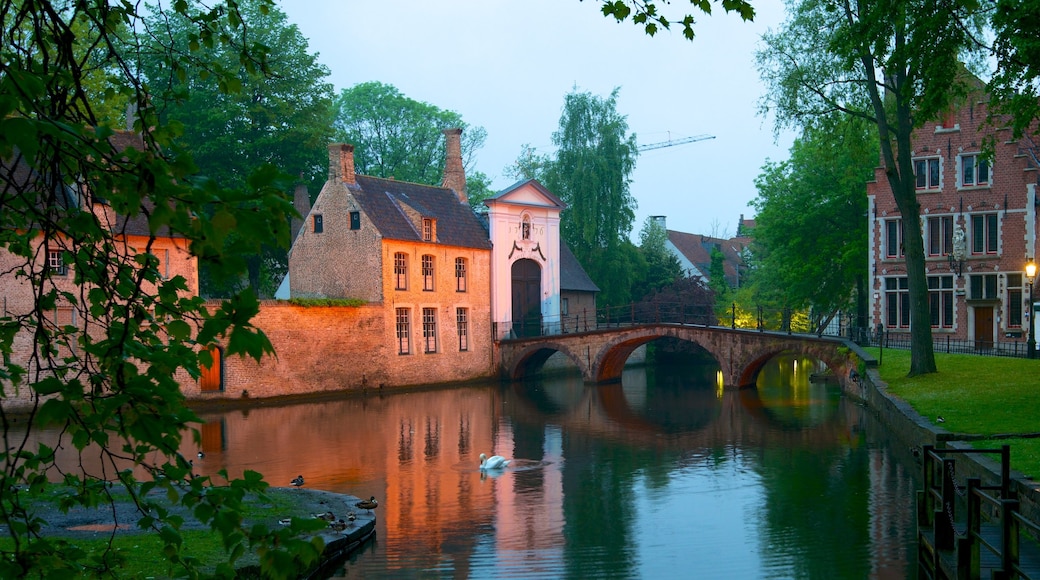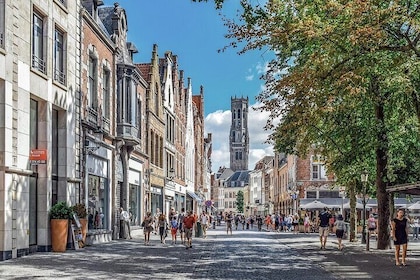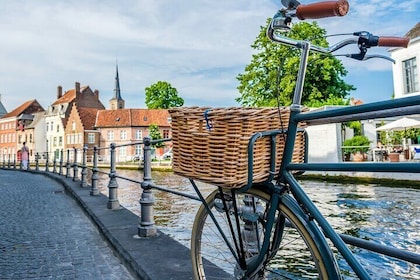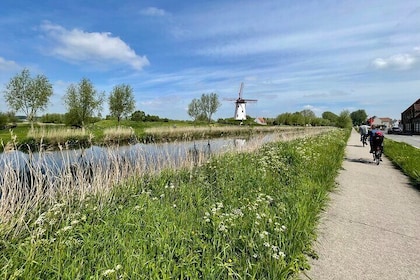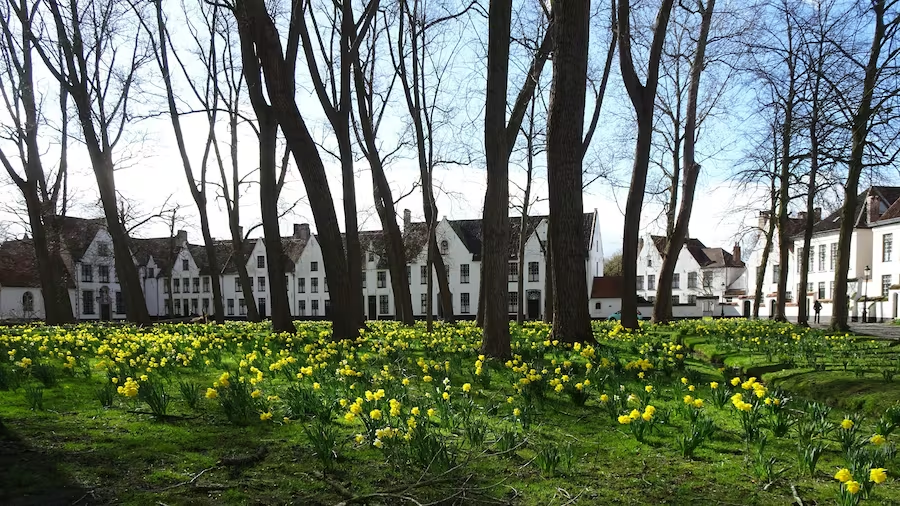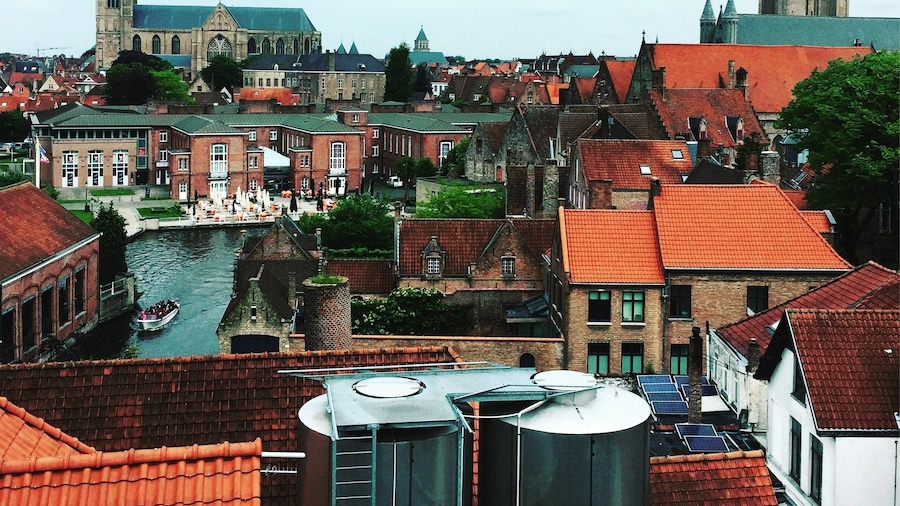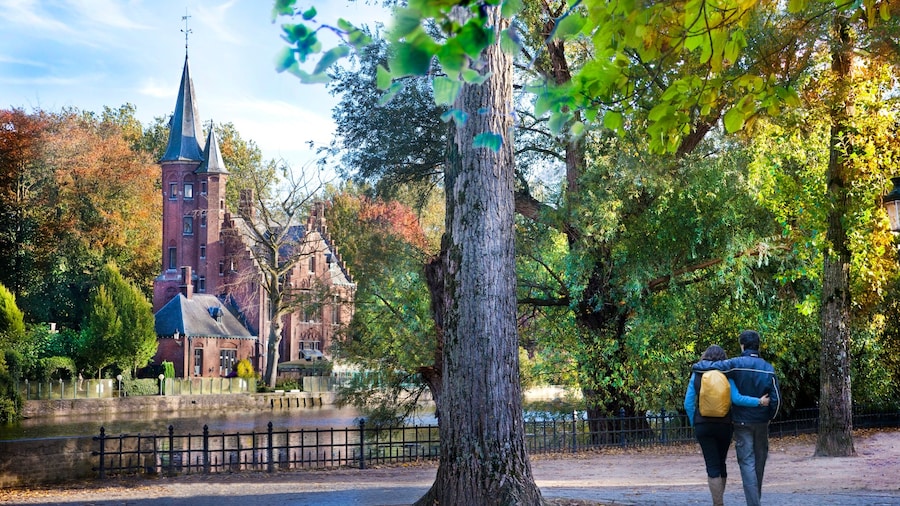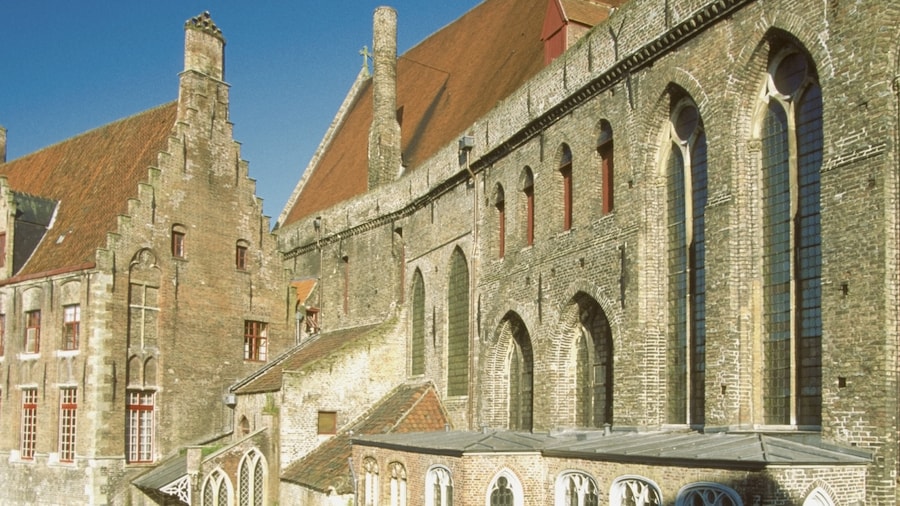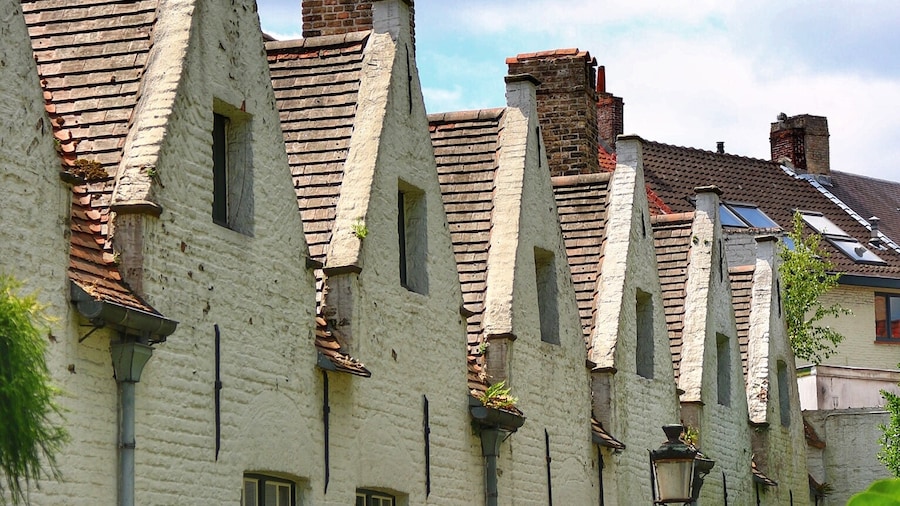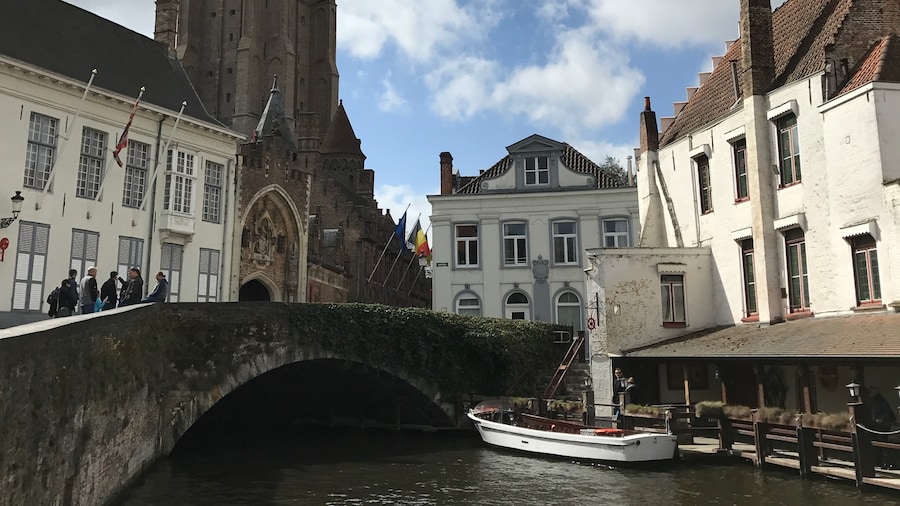Step from the busy market square into a tranquil, centuries-old commune inhabited by nuns blessed with the singing voices of angels.
The Begijnhof offers a rare and intimate experience of seeing nuns living and worshiping much the same as they would have done centuries ago. The Begijnhof or Beguinage name actually refers to a collection of small buildings used by Beguine nuns. Belgium has a number of existing begijnhofs the one in Bruges is exemplary. The Beguines were a sisterhood formed in the 13th century. Many women joined the order following the depletion of Belgium’s male population due to war. The women were often supported by wealthy benefactors.
The nuns you'll see walking around today in the Bruges Begijnhof are Benedictine sisters, not Beguines. They've lived here since 1937.
Enter the Begijnhof across the bridge from the north of Minnewaterpark. The Countess of Flounders founded the site in 1245. Most of the houses inside the complex are from the 17th and 18th centuries, although some are from as early as the 15th century. Admire the whitewashed dwellings, cobblestone pathways, old-fashioned lampposts and simple tree-filled garden. Visit in spring to see the grass covered in daffodils.
The church you can see here now was rebuilt in the early 17th century after the original burned down in 1584. The baroque embellishments were made later on. Arrive in the afternoon to witness some of the sisters singing vespers, a beguiling sound. Explore the insightful museum inside the Beguine's house too. The largest, most striking of the dwellings, this was once home to the head nun, or “grootjuffrouw”.
The Begijnhof is located to the northwest of Minnewaterpark. Since these are small attractions, it makes sense to do both in the same day. Entry to the Begijnhof is free. Visitors are advised to respect the privacy and solemnity of the residents. There's a small fee (well worth it) for the Beguine's house. The Begijnhof also has a shop, which is a good spot to find authentic gifts and souvenirs.
